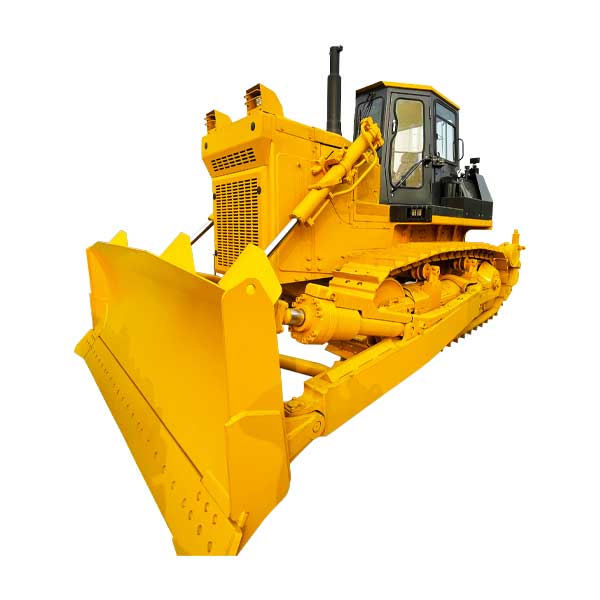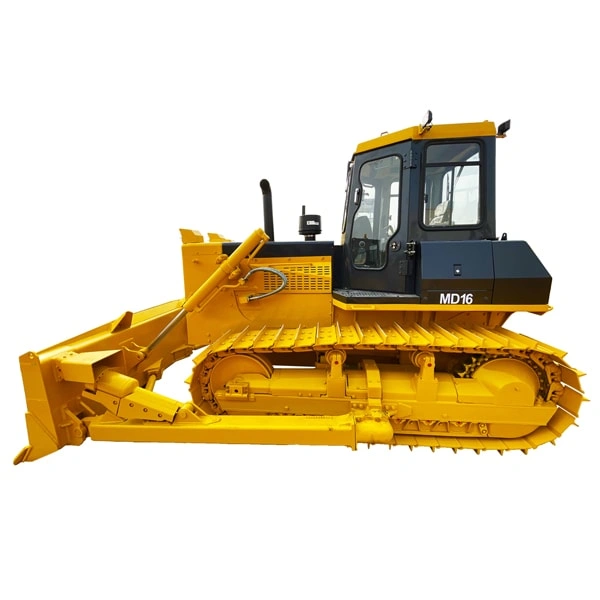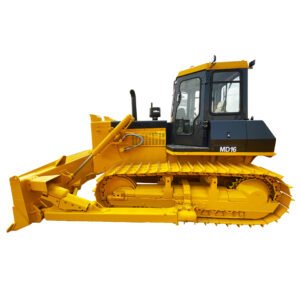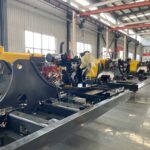Introduction

Operating heavy machinery like a wheeled dozer demands precision, caution, and skill. Ensuring both productivity and safety is paramount in such tasks. In this guide, we’ll explore five essential tips to enhance productivity while operating a wheeled dozer safely. Whether you’re a seasoned operator or new to the field, these strategies will help optimize your performance and minimize risks.
Understanding Wheeled Dozer Basics
Before delving into operational tips, it’s crucial to have a comprehensive understanding of wheeled dozers. These versatile machines are equipped with a large metal plate (blade) at the front, designed for pushing various materials such as soil, sand, and debris. Unlike tracked dozers, wheeled variants feature tires, providing mobility across different terrains while maintaining traction.
Prioritize Regular Maintenance
A well-maintained wheeled dozer not only operates efficiently but also ensures operator safety. Regular maintenance tasks include checking fluid levels, inspecting tire conditions, lubricating moving parts, and examining the hydraulic system for leaks or damages. Following the manufacturer’s maintenance schedule diligently can prevent unexpected breakdowns and prolong the lifespan of the equipment.
Optimize Operational Techniques
Efficient operation of a wheeled dozer relies heavily on mastering proper techniques. This includes understanding how to manipulate the controls for precise movements, such as blade positioning and speed adjustment. Additionally, operators should be adept at navigating varied terrains, anticipating obstacles, and adjusting their approach accordingly to maintain stability and safety.
Implement Safety Protocols
Safety should always remain a top priority when operating heavy machinery. Before starting work, operators must conduct thorough pre-operation inspections to identify any potential hazards or defects. Wearing appropriate personal protective equipment (PPE), such as helmets, gloves, and high-visibility clothing, is non-negotiable. Furthermore, establishing clear communication protocols and adhering to site-specific safety guidelines can significantly reduce the risk of accidents.
Continuous Training and Skill Development
Operating a wheeled dozer proficiently requires ongoing training and skill development. Even experienced operators can benefit from refresher courses and advanced training programs to stay updated on industry best practices and technological advancements. Additionally, fostering a culture of safety within the workplace encourages knowledge sharing and collective responsibility for accident prevention.
(Sample Maintenance Schedule)

| Maintenance Task | Frequency | Responsible Party |
|---|---|---|
| Fluid Level Check | Daily | Operator |
| Tire Inspection | Weekly | Operator |
| Lubrication | Bi-weekly | Maintenance Crew |
| Hydraulic System Check | Monthly | Maintenance Crew |
This sample maintenance schedule outlines basic tasks and their recommended frequencies to keep the wheeled dozer in optimal condition.
With a proactive approach to maintenance, adherence to safety protocols, and continuous skills enhancement, operators can ensure both productivity and safety in wheeled dozer operations.
FAQ
Q: What should I do if I encounter an obstacle while operating a wheeled dozer?
A: If you encounter an obstacle, stop the machine immediately and assess the situation. Avoid sudden movements or attempts to override the obstacle forcefully. Depending on the obstacle’s nature and size, you may need to seek assistance or use alternative routes.
Q: How often should I conduct pre-operational inspections?
A: Pre-operational inspections should be conducted before each shift or whenever the wheeled dozer undergoes a change in operation or environment. Regular inspections help identify potential issues early and ensure the equipment’s optimal performance and safety.
Conclusion
Operating a wheeled dozer safely and efficiently is a combination of skill, knowledge, and adherence to best practices. By prioritizing regular maintenance, mastering operational techniques, implementing stringent safety protocols, and investing in continuous training, operators can significantly boost productivity while minimizing risks on the job site. Remember, safety always comes first.







-150x150.webp)
